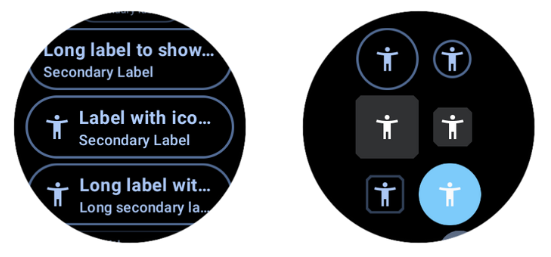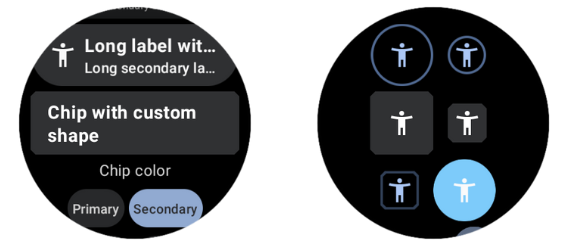 ☰
🔍
☰
🔍
07 Aralık 2022

Posted by Kseniia Shumelchyk, Android Developer Relations Engineer
Today we’re releasing version 1.1 of Compose for Wear OS, our modern declarative UI toolkit to help developers build beautiful, responsive apps for Wear OS.
Since the first stable release earlier this year, we have seen many developers taking advantage of the powerful tools and intuitive APIs to make building their app simpler and more efficient. Todoist and Outdooractive are some of the developers that rebuilt their Wear apps with Compose and accelerated the delivery of a new, functional user experience.
Todoist increased its growth rate by 50% since rebuilding their app for Wear 3 and Outdooractive reduced development time by 30% and saw a significant boost in developer productivity and better design/developer collaboration:
“Compose makes the UI code more intuitive to write and read, allowing us to prototype faster in the design phase and also collaborate better on the code. What would have taken us days now takes us hours.”
The Compose for Wear OS 1.1 release contains new features and brings improvements to existing components, focusing on UX and accessibility. We’ve already updated our samples, codelab, and Horologist libraries to work with Compose for Wear OS 1.1.
The Compose for Wear OS 1.1 release includes the following new functionality (baseline profiles already added for new components):
 |
| OutlinedChip and OutlinedButton composables |
 |
| Different Chip and Button shapes |
A new experimental API has been added to implement placeholder support. This can be used to achieve three distinct visual effects separately or all together:
 |
| Placeholder API usage examples |
Check out the reference docs and sample in Horologist to see how to apply the placeholder to common use cases, such as a Chip with icon and a label that puts placeholder over individual content slots and draws a placeholder shimmer on top while waiting for data to load.
Horologist’s fadeAway modifier has been graduated to scrollAway modifier in version 1.1. Modifier.scrollAway scrolls an item vertically in and out of view, based on the scroll state, and already has overloads to work with Column, LazyColumn and ScalingLazyColumn.
 |
| ScrollAway modifier usage with TimeText |
CurvedTextStyle now supports additional parameters (fontFamily, fontWeight, fontStyle, fontSynthesis) to specify font details when creating a curved text style. Extended curved text style can be used on both curvedText and basicCurvedText.
 |
| Applying different font to curved text |
The 1.1 release also focuses on bringing a refined user experience, improvements for TalkBack support and overall better accessibility:
To begin developing with Compose for Wear OS, get started with hands-on experience trying our codelab, and make sure to check out the documentation and samples. Visit Compose for Wear OS release notes for full list of changes available in version 1.1.
Note that using version 1.1 of Compose for Wear OS requires using the version 1.3 of androidx.compose libraries and therefore Kotlin 1.7.10. Check out the Compose to Kotlin Compatibility Map for more information.
Compose for Wear OS continues to evolve with the features you’ve been asking for. Please do continue providing us feedback on the issue tracker and join Kotlin Slack #compose-wear channel to connect with the Google team and dev community.
We’re excited to see a growing number of apps using Compose for Wear OS in production, and we’re grateful for all issues and requests that help us to make the toolkit better!
Discover even more with technical sessions from the Android Dev Summit providing guidance on app architecture, testing, handling rotary input, and verticalized sessions for media and fitness.